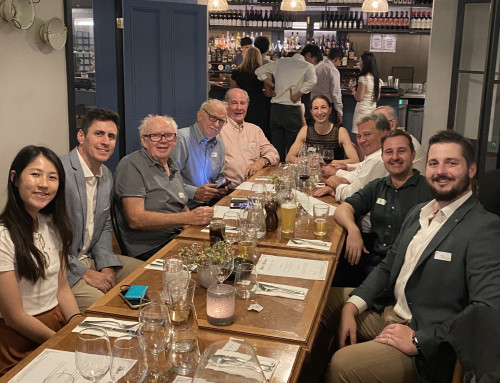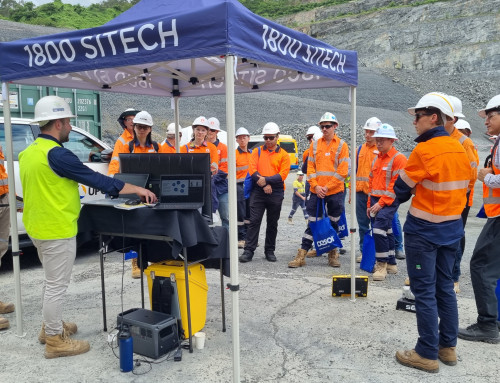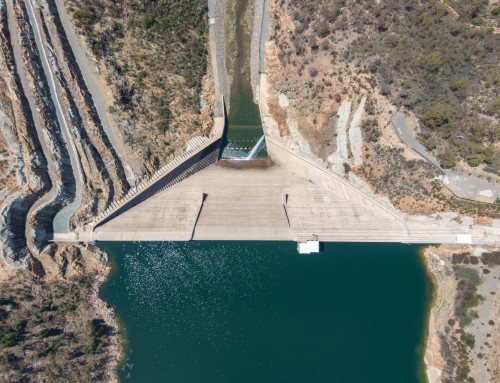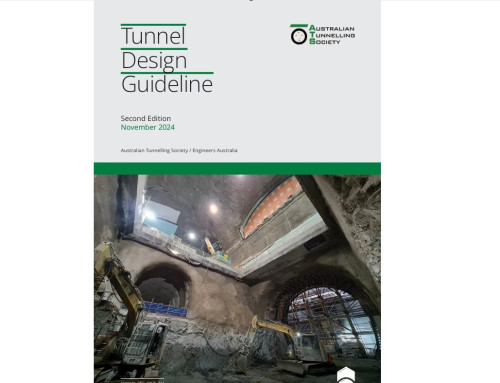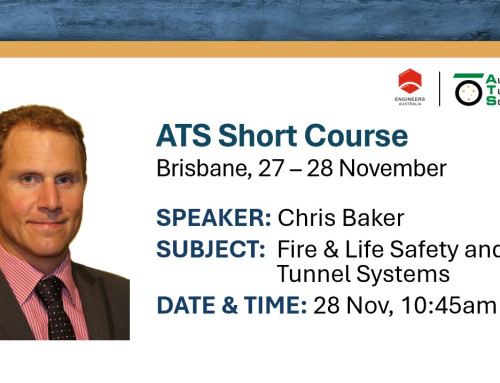ATS beginnings
Today’s Australian Tunnelling Society (ATS) can trace its roots back to the 1948 establishment of the National Committee on Soil Mechanics and Foundation Engineering by the Institution of Engineers Australia (IEAust). This was subsequently restructured and renamed as the National Committee on Geomechanics in 1968, to reflect the growing involvement of rock mechanics and the mining industry, under the joint sponsorship of the IEAust and the Australasian Institute of Mining and Metallurgy (AusIMM).
Towards the end of the 1960’s, with the high-profile Snowy Hydro Scheme (and its incredible 225 kilometres of tunnels) nearing completion and several other major tunnelling projects under construction or consideration, tunnelling in Australia was increasingly seen as an industry in need of its own agency.
This need was apparently global because in 1970, an Advisory Conference on Tunnelling, sponsored by the Organization for Economic Cooperation and Development (OECD), was held in Washington, DC. One of its principal recommendations was that a national tunnelling agency to “define and promote areas of research and development in tunnelling” should be established in all OECD member countries.
When the Australian Government received this advice, it asked the Department of National Development to take the lead. They referred it to the IEAust who decided the newly formed Australian Geomechanics Society (AGS) should be responsible. (The AGS had been established following the first Australia-New Zealand Conference on Geomechanics in Melbourne in 1971.)
In parallel to all the high-level official discussions on governance, mechanised tunnelling on the ground was continuing in earnest and the need to disseminate the latest knowledge, innovations and expertise was growing ever more important. It was in this context, in 1970, that Dr Bill Bamford was given the go ahead by the AusIMM to organise a two-day symposium on Raise and Tunnel Boring in Australia at the University of Melbourne. The event was an adjunct to the Annual Conference of the AusIMM, and the proceedings were retrospectively recognised as the first publication of the (yet to be established) Australian Tunnelling Association (ATA).
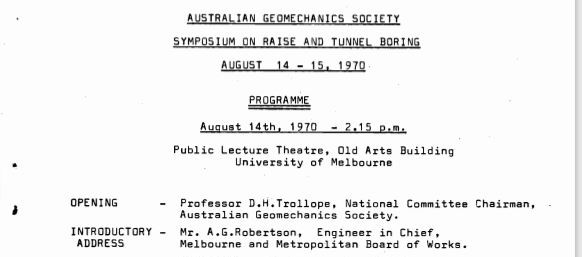
By 1972, the OECD recommendation had filtered through the various Australian agencies and was the responsibility of the AGS’s National Committee, chaired by Prof. Hugh Trollope and later by Sandy Longworth. The AGS held a one-day seminar in Melbourne to hear a series of papers on the state-of-the-art of tunnelling, and to discuss the scope, objectives and terms of reference of the proposed committee. (This was later recognised as the second publication of the ATA.)
As a result of the interest expressed by the participants, the AGS agreed to set up an Australian Tunnelling Committee (ATC), whose scope and activities might not necessarily be restricted to normal learned society functions, but could include broader socio-economic aspects. The ATC was then established, comprising Bill Bamford, Sandy Bennet, Arthur Cairncross, Charles Gerrard, Warren Peck, Neville Smith and Frank Watson, with the task of establishing an inaugural program of activities in the tunnelling area. In 1973, the committee decided to organise a two-day conference called “Re-Shaping Cities Using Underground Construction,” which was held in Melbourne in October 1974. This was retrospectively recognised as the first Australian Tunnelling Conference.
Also in 1974, the International Tunnelling Association (ITA) was inaugurated, and Australia not only agreed to become affiliated with it, but was one of the founding members. This was the point at which the ATC transformed into the representative Australian body called the Australian Tunnelling Association.
The AusIMM’s CEO, Miss Beryl Jacka, who had enthusiastically thrown her support behind the fledgling tunnelling group, offered to host the secretariat, but the IEAust insisted on doing this on the grounds that more members of ATA were IEAust members than AusIMM members. The formal agreement between the two sponsoring bodies stated that any operational losses were to be equally shared by both sponsoring bodies.
In 1975, shortly after Bill Bamford had taken office as the inaugural ATA National Chair, the first activity planned by the new ATA was a conference on “Design and Construction of Tunnels and Shafts.” This event was organised by Bill Bamford, Charles Gerrard, Bob Horseman, Warren Peck, and Frank Watson and was held in Melbourne in August 1976. It was retrospectively recognised as the second Australian Tunnelling Conference.
With a clear remit and a burgeoning industry to service, Australia’s tunnelling agency was now well underway.
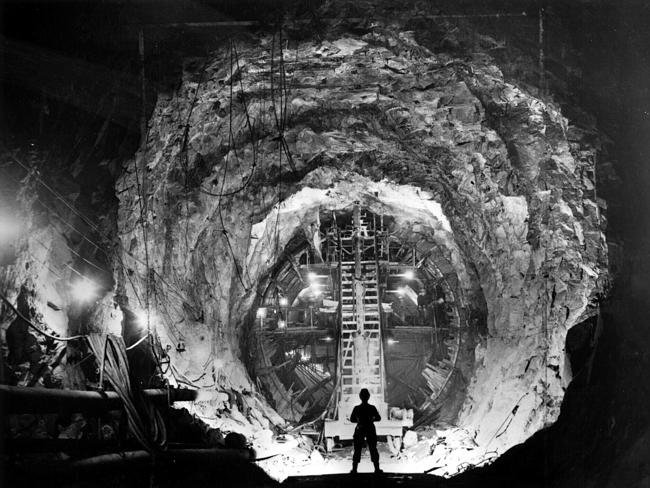
The Snowy Hydro Scheme was one of the reasons that tunnelling in Australia was seen as an industry in need of its own agency.
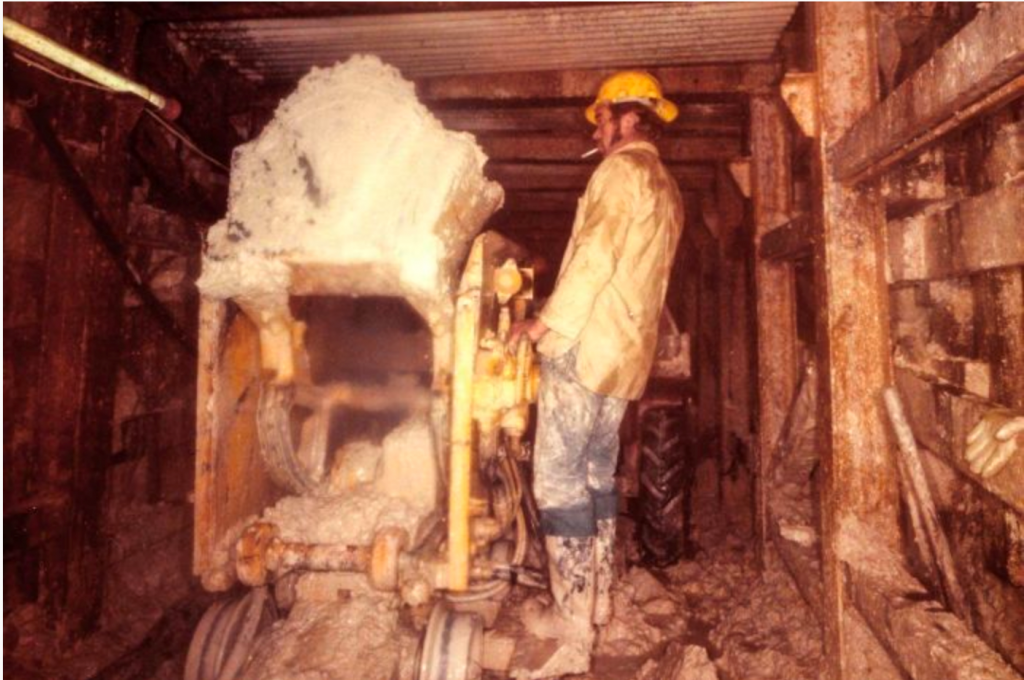
Digging the pilot tunnel for the Melbourne Underground Rail Loop (MURL) in August 1972. MURL was another of the reasons that tunnelling in Australia was seen as an industry in need of its own agency. Note the cigarette – a sign of how much society (and underground safety, has changed since the 70s. Photo: Public Record Office Victoria
Kick starting the society
Dr Bill Bamford is recognised globally as a world leader in the field of specialised rock testing with a lifetime of experience and research devoted to the area. He is a founding member of the ATS and was the first Chair between 1975-1978.
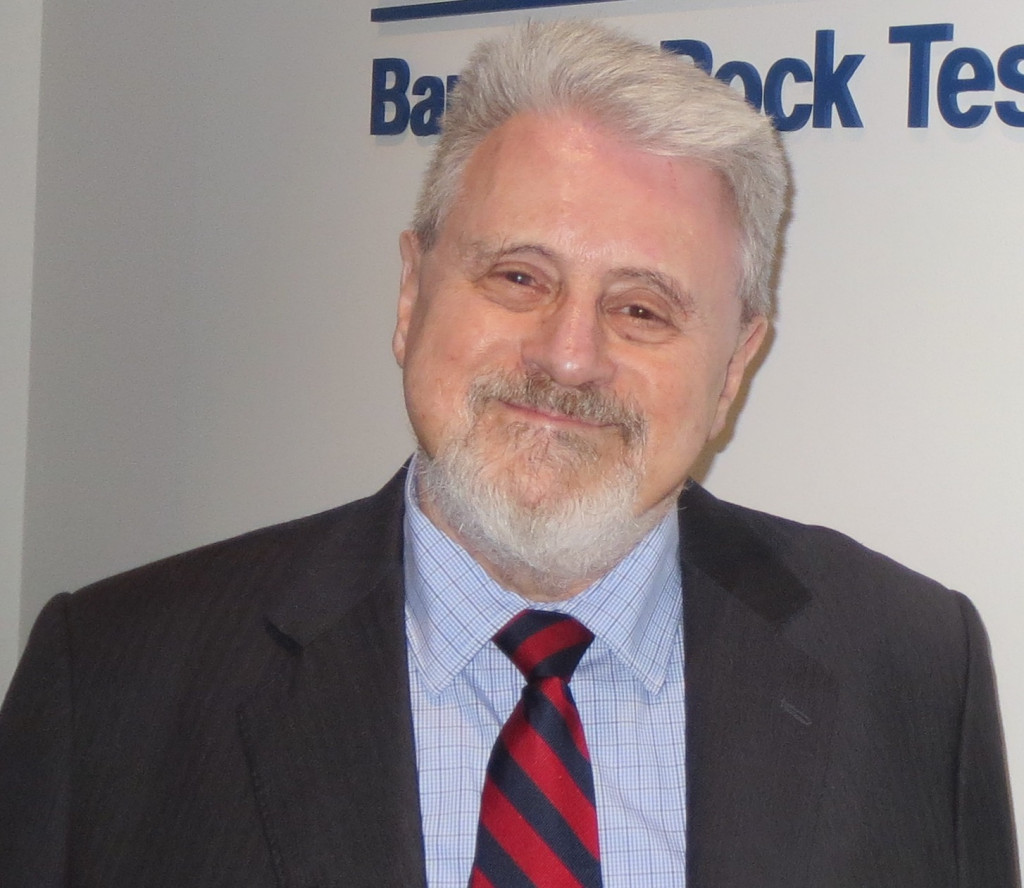
“In 1957, when the Space Age dawned with Sputnik 1 going into orbit around the world, and when the first hard-rock TBM had been pioneered by Jim Robbins, only five years earlier, I first worked underground. To be precise, I worked in the Tumut 1 underground power station and its tailrace tunnel in the Snowy Mountains Hydroelectric Scheme as an Engineering Geologist. Later I worked on the Geehi Dam and Murray 1 Underground Power Station investigations, and was resident geologist on the Murrumbidgee-Eucumbene Tunnel. (Interestingly, fast forward 60 years and I was back, testing the same rocks, investigating the Snowy 2.0 project.)
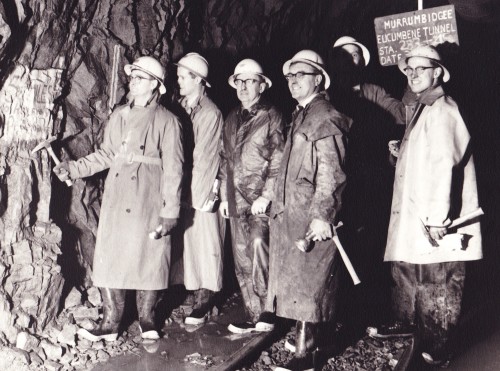
Murrumbidgee-Eucumbene Tunnel 1959 – Bill Bamford is on far left, holding a hammer in his right hand, immediately in front of David Stapledon, with chief engineering geologist Dan Moye, fourth from left.
I worked for the Snowy until 1960, when I joined the staff of the Victorian Mines Department and started the geotechnical investigations work for the Melbourne Underground Rail Loop (MURL). I worked on this and a variety of other mining and tunnelling projects until 1967, when I joined the University of Melbourne as the first Lecturer in Rock Mechanics to be appointed in Australia. This was a real honour and a great opportunity because Australia’s tunnelling industry was booming. Technical innovations were thriving and throughout the 70s and 80s we were arguably world leaders in several areas including the use of TBMs, roadheaders, rock bolting and shotcreting. Certainly, the ‘Melbourne Shield,’ designed locally, was a term that was known globally during this time.
Because of this momentum, the first official tunnelling event I organised, the two-day Raise and Tunnel Boring in Australia symposium at the University of Melbourne in 1970, was a great success. A total of 19 papers were presented to an audience of just over 200 and the next day participants got the opportunity to visit the South-East Trunk Sewer and the Dandenong Valley Trunk Sewer. I believe the success of this led the AusIMM to nominate me as their representative on the National Committee of the AGS from the time it was formed in 1971 onwards.
When the Australian Tunnelling Committee (ATC) was formed in 1972 it was under the auspices of the AGS, and its founding statutes stated that the chairman of the new tunnelling body ‘should be the Chairman of the AGS, or his nominee.’ When I assumed the position of National Chairman of the AGS in 1975, I did try to find a suitable nominee to be chairman of the ATC, but eventually took the job myself. I would say that during my three years as chairman of both societies, I spent more effort getting the ATC established than continuing the already well-established AGS.
Following the 1974, IEAust seminar in Melbourne, called Re-Shaping Cities Using Underground Construction, which attracted around 15 invited papers and was very well attended, we decided that organising a conventional tunnelling conference should be our next priority. We held this in 1976 in the National Science Centre (Clunies-Ross House) and it was called “Design and Construction of Tunnels and Shafts.” There were 21 papers presented and over 200 people came along. The success of this conference established a regular series of successors, at two or three yearly intervals which has continued ever since. During this period, we also changed the name to the Australian Tunnelling Association (ATA) and opened it up to membership. By the mid-seventies we had around 100 members.
Throughout the 25 years I was actively involved with the ATS (as it eventually became known), I served as a member of the National Committee from 1975 until 2002, and on the Victorian Chapter Committee from 2011 until 2015, but I was also involved in the International Tunnelling Association (ITA) too. I was on the organising committee for the 1987 World Tunnel Congress in Melbourne. My most memorable moment of that conference wasn’t so much the tunnelling content, it was sitting next to Sir David Smith at the dinner, the man who had read the Governor-General’s proclamation that essentially dismissed the Prime Minister Gough Whitlam in that iconic political moment of 1974.
The Gala Dinner of the WTC 1987
The Gala Dinner of the World Tunnel Congress 1987. Photo includes Claude Berenguer, the Secretary-General of the ITA (second from the left); Bill Bamford (seated at the extreme right of the table); Sir David Smith, the Official Secretary to the Governor-General of Australia (third from the right); and Frank Watson, the General Manager of the Melbourne Underground Rail Loop Authority (standing behind Sir David Smith).
Between 1994 and 1999 I represented Australia at the annual meetings of the ITA and World Tunnel Congresses, and at the Oslo meeting in 1999 I presented Australia’s successful bid to host the World Tunnel Congress in 2002. To supplement my presentation, I had brought all these little koalas to give out which everyone loved. Even the people who voted against us wanted a koala! We only defeated Singapore’s rival bid that year by two votes and I’ve always wondered if the koalas swung it for us. In actual fact, they were the only thing I had to give out because DHL had lost the brochures the ATS had developed that detailed how wonderful a place Sydney was and why we should have the congress there!
Although it was hard work at times, I really enjoyed helping establish the ATS and then helping out at the national and international scale. I’m particularly proud that my peers thought so much of my contribution that I was made an honorary life member of the Society in 2000.”

Melbourne Underground Rail Loop – Exploratory pilot tunnel beneath Latrobe Street 1966 – Preparing in-situ testing. Bill Bamford stands in the centre, wearing a white hat, overalls and a miner’s lamp battery on his belt.
The state of play in 1979
Bill Bamford is tasked with finding out what is not yet being studied but should be studied in order to progress the tunnelling industry in Australia
In 1979, the Institution of Engineers Australia appointed a Working Party on R&D in Civil Engineering and asked Bill Bamford “to inquire into the level of research in Civil Engineering in Australia; what areas are not being studied and what work needed to be undertaken” among companies working in tunnelling.
Bill duly wrote a circular to his ATA colleagues detailing the objectives of the working party and that he has “attempted a breakdown of tunnelling R&D into the six main activity areas” he has nominated. He sends his questionnaire to group of civil engineering organisations and asks them to, “please supply an approximate estimate of man years and dollars for the areas shown, or for others which you think are appropriate.”
Compared to the R&D costs of tunnelling today, the numbers Bill gets back seem quite quaint today.
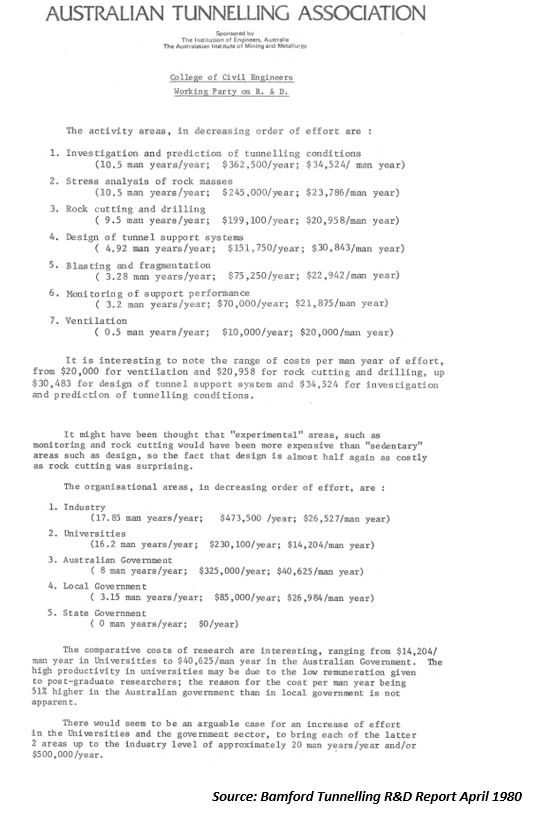
This story was first published in 50 years of the ATS. You can read the publication in full here or contact us if you’d like to access a hard copy: ats@engineersaustralia.org.au



